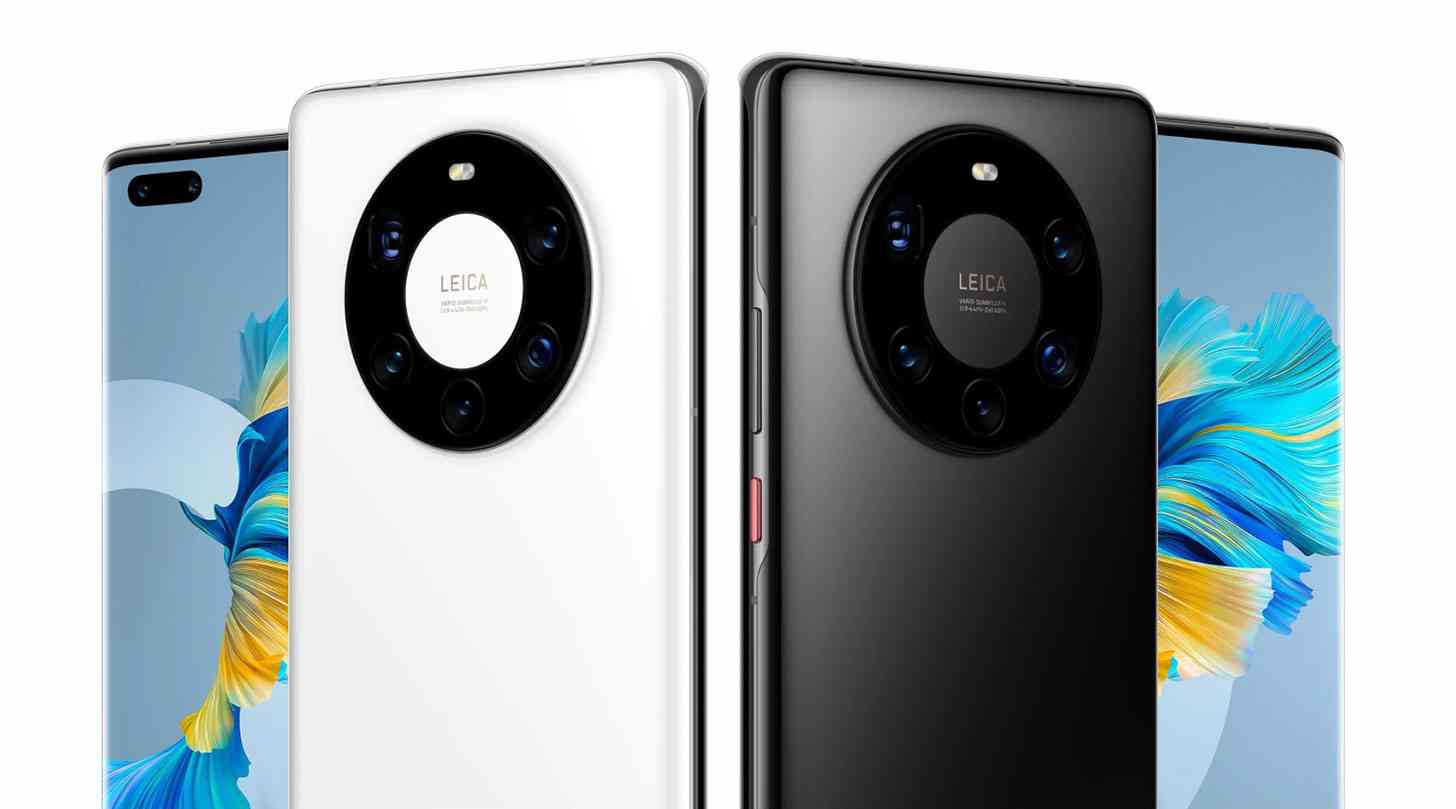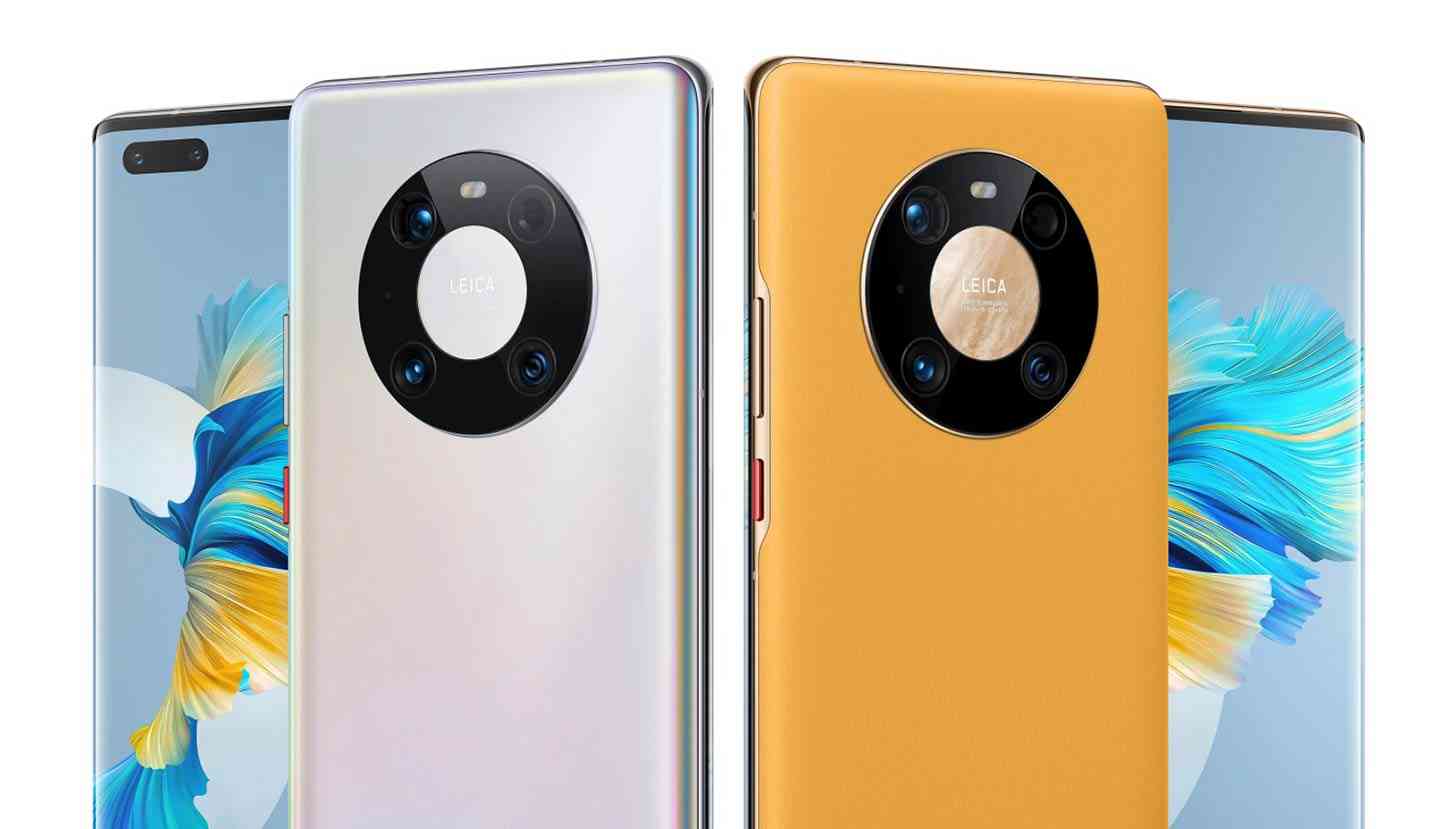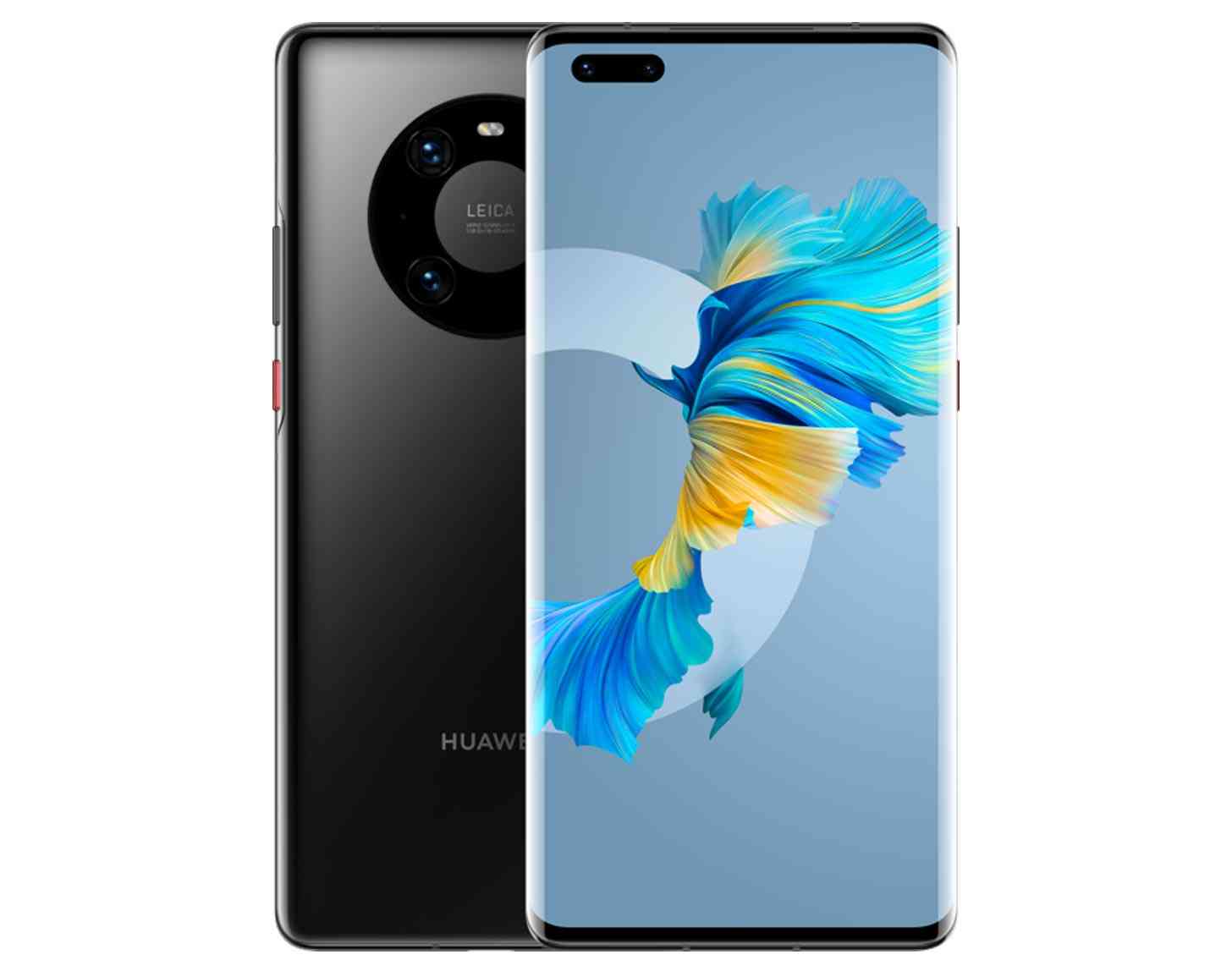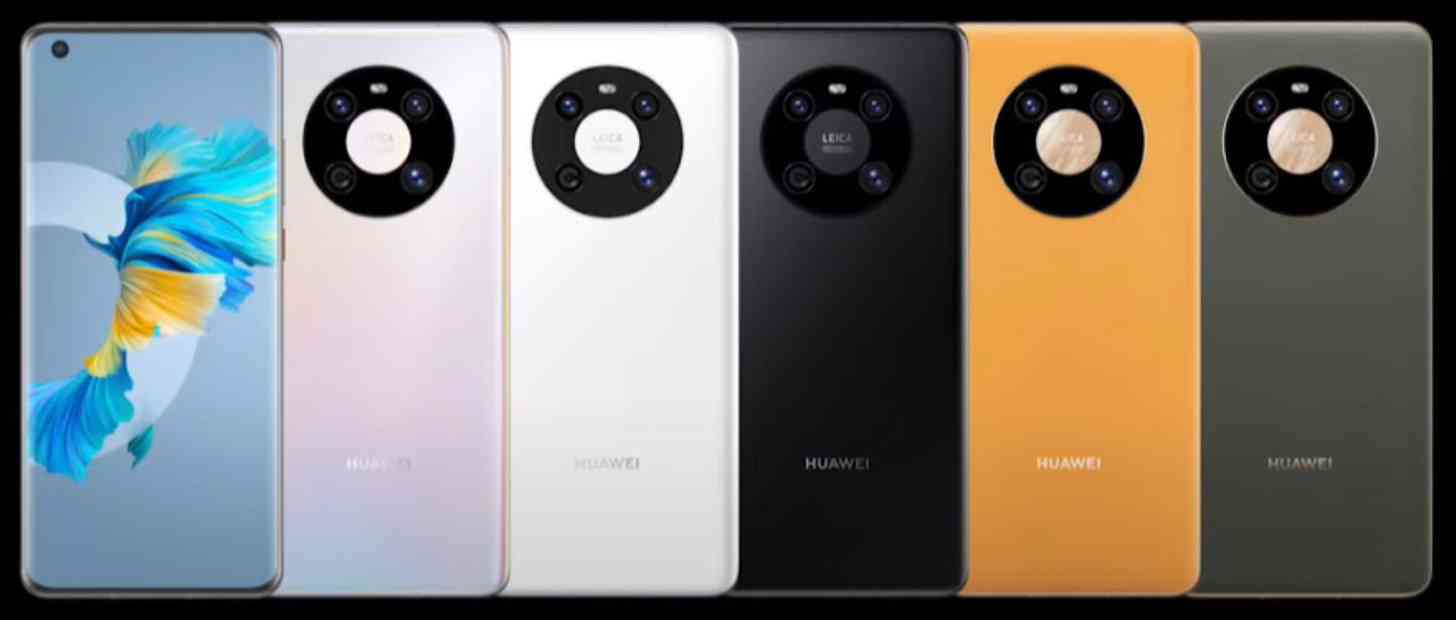
Huawei today introduced its newest flagship smartphones in the Mate 40 series, and like the Mate 30 phones before them, these new models place a heavy emphasis on camera performance.
The Huawei Mate 40 Pro+ (shown above) sits at the top of this new family, boasting five rear cameras arranged in a circular housing. There's a 50MP main camera with f/1.9 aperture and 1/1.28-inch sensor plus an RYYB color filter array and OIS. It's also got a 20MP ultra-wide cam, a 12MP telephoto camera with 3x optical zoom, an 8MP SuperZoom cam with 10x optical zoom, and a Time of Flight (ToF) depth-sensing camera. In all, the Mate 40 Pro+ has a 17x optical zoom range.
The non-Plus Mate 40 Pro (below) is packing three cameras, including the same 50MP main and 20MP ultra-wide cameras as its Plus sibling. There's a 12MP telephoto camera with 5x optical zoom, too, and Huawei says that the Mate 40 Pro offers a total 7x optical zoom range.

Both the Mate 40 Pro and Pro+ are powered by Huawei's new octa-core Kirin 9000 processor that Huawei says is the world's first 5nm 5G system-on-chip. The Kirin 9000 is also packing a 24-core GPU and an NPU to help out with AI processing, camera features, and gesture controls.
The two Mate 40 Pro models are also packing a 6.76-inch 2772x1344 OLED display with 90Hz refresh rate and an in-display fingerprint sensor. The displays are curved on both sides, but Huawei says its software will fight accidental touches. There are power and volume buttons on the right side of the phones and you can also control the volume with a virtual key on the left side of the device's screen.

There's a dual selfie camera setup on both the Mate 40 Pro and Pro+ that includes a 13MP wide angle cam and a depth sensor, both of which are in a hole-punch in the upper-left corner of the phones' screens. The Mate 40 Pro and Pro+ also pack 256GB of built-in storage, with 8GB of RAM in the Pro and 12GB in the Pro+, and both have IP68 water and dust resistance, too.
Finally, both the Mate 40 Pro and Pro+ come equipped with a 4400mAh battery. Huawei has included 66W wired fast charging and 50W wireless fast charging so you can refill your battery in a hurry no matter ho you prefer to charge.

Rounding out Huawei's trio of new phones is the Mate 40. It's got the same 50MP rear camera as the Pro versions but its ultra-wide camera is a 16MP snapper. The 8MP telephoto camera has 3x optical zoom and 5x hybrid zoom.
The Mate 40 is also packing a smaller 6.5-inch 2376x1080 OLED screen, though it does still geta 90Hz refresh rate and in-display fingerprint sensor. A Kirin 9000E chipset is powering the Mate 40, which includes an octa-core CPU and 22-core GPU, and there's 8GB of RAM, 256GB of storage, and a single 13MP selfie camera. The battery on the Mate 40 comes in at 4200mAh and it supports 40W wired fast charging.
All three of Huawei's new Mate 40 phones come with EMUI 11, the company's custom UI that's running on top of Android 10. However, because Huawei is still banned from using Google apps and services, you won't find any Google apps like YouTube or Google Maps, nor will you get the Play Store for downloading apps. Huawei does include its own App Gallery, and the company says has 2 million people developing apps for its own app store.
Pricing for the Huawei's new Mate 40 flagships will start at €899 EUR ($1063 USD) for the standard Mate 40. The Mate 40 Pro will be priced at €1199 EUR ($1418 USD) while the Mate 40 Pro+ will set buyers back €1399 EUR ($1654 USD).